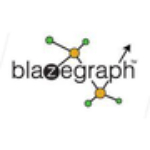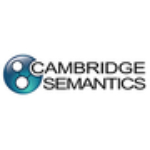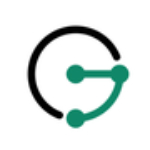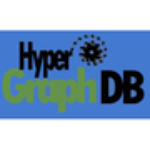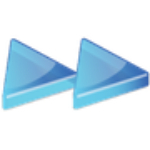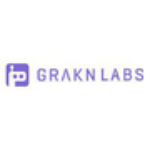TechnologyCounter provides genuine, unbiased real user reviews to help buyers make informed decisions. We may earn a referral fee when you purchase through our links, at no extra cost to you.
List of Best Graph Database Platform
Showing 1 - 8 of 8 productsBlazegraph is a solution for efficient data management and analysis. With its advanced database technology and fast querying capabilities, Blazegraph empowers businesses to make quick and informed decisions. By harnessing the power of graph databases...Read Blazegraph Reviews
AnzoGraph DB is an innovative database management system designed to handle the complex and rapidly growing data demands of modern businesses. With its advanced graph processing capabilities, AnzoGraph DB offers unparalleled performance and scalabili...Read AnzoGraph DB Reviews
JanusGraph, the innovative software that revolutionizes the world of graph databases. With its powerful and flexible features, JanusGraph offers a unique way to store, query, and analyze complex relationships and data. Say goodbye to traditional tabu...Read JanusGraph Reviews
HyperGraphDB is a and versatile database management system that offers unique capabilities for managing, storing, and querying complex, interconnected data structures. Its innovative design allows for efficient retrieval and manipulation of data, mak...Read HyperGraphDB Reviews
OrigoDB, is a solution for data storage and management. Designed to enhance efficiency and streamline operations, OrigoDB empowers businesses with its robust features and flexible capabilities. With its intuitive interface performance, OrigoDB is the...Read OrigoDB Reviews
VelocityDB is a is a database management system designed for high-performance and scalability. With its lightning-fast storage and retrieval capabilities, its the ideal solution for handling complex data in real-time applications. Backed by years of...Read VelocityDB Reviews
Nebula Graph is a graph database designed for the modern world. With its advanced capabilities, Nebula Graph empowers users to easily store, access, and analyze complex networks of data. Say goodbye to traditional relational databases and hello to a...Read Nebula Graph Reviews
TypeDB is a database solution for managing complex and interconnected data. Designed to handle massive amounts of information, TypeDB offers unparalleled scalability, flexibility, and performance, making it a top choice for businesses looking to stre...Read TypeDB Reviews
- What Is Graph Database Platform?
- Top Reasons Why Businesses Need Graph Database Platform?
- What Are the Top Key Features of Graph Database Platform?
- What Are the Top Benefits of Graph Database Platform?
- What Are the Steps to Choose the Right Graph Database Platform?
- What Are the Types of Graph Database Platform for Different Industries?
- What Are the Technology Trends for Best Graph Database Platform?
- What Are the Deployment Options for Graph Database Platform?
What Is Graph Database Platform?
Databases built to store and query data in graph formats are known as graph database platforms. A graph is made up of nodes, which represent objects such as people or places, and edges, which connect them. A node representing a person, for example, may have an edge to a node representing a location.
Graph db can be used to represent complicated, related data that is difficult to represent in typical relational databases. Analysts can examine connections between data pieces by using graph models and a visually intuitive query language.
Furthermore, graph models are well-suited for large-scale data processing, making them ideal for data science applications. Both relational and non-relational data are stored, queried, and analysed using top graph databases. They are an effective tool for detecting patterns and trends in data as well as comprehending relationships between data items.
As a result, they are frequently used in applications such as social networks, recommendation systems, and fraud detection. A graphical db platform, in summary, is a sort of database designed to store and query data in graph forms in order to gain quick insights into highly connected datasets. Graph databases facilitate the identification of patterns, trends, and interactions among data items, making them an effective tool for data science applications.
Top Reasons Why Businesses Need Graph Database Platform?
1. Improved scalability – Graph db can readily scale up and down to meet the changing needs of the organisation.
2. Flexible data storage – Graph databases can store and manage incredibly complex data while still providing rapid and easy access to it.
3. Better performance – Best graph databases enhance performance by performing sophisticated logic with minimal latency.
4. High availability – Graph databases have high availability, which ensures that data is always available and accessible to applications.
5. Automation – Graphical db automate typical procedures by using pattern matching and inference rules, resulting in increased efficiency.
6. Rich visualisations – Top graph databases enable users to quickly generate data visualisations in order to acquire insights.
7. Elaborate queries – Graph databases enable the development of complex queries and the study of data from many angles.
8. Improved security – Built-in security features in graph databases ensure that only authorised individuals have access to data.
9. Reduction of data redundancy – Graph db reduce redundant data, which improves data integrity and query speed.
10. Improved interoperability – Best graph databases are interoperable across several types of platforms, making data sharing easier.
11. Multiple data sources – Users can access and mix data from many sources using graph databases.
12. Greater scalability – When the size of the data changes, graph databases may readily scale up or down.
13. Removing silos – Graphical db improve links across databases, data warehouses, and systems, resulting in a more comprehensive perspective of the business.
14. Data analysis – Graph databases offer a variety of analytics to assist organisations in better understanding customer behaviour and trends.
15. Easier integration – Best graph databases are easily integrated with other database technologies, removing the need for custom coding.
What Are the Top Key Features of Graph Database Platform?
1. Flexible data model: Data is stored in graph databases as graph structures, with nodes (entities) representing items, attributes describing them, and edges reflecting relationships between them. This enables a flexible data model that can swiftly adapt to changing requirements, allowing firms to innovate more quickly.
2. Fast Queries: Graph db are built for quick query execution. They can quickly query, browse, and traverse data structures to easily answer complex queries by employing graph traversal algorithms such as depth-first search.
3. Scalability: Top graph databases are extremely scalable, allowing them to accommodate massive amounts of data without the requirement for horizontal scaling. Furthermore, the graph database model employs index-free adjacency, which eliminates the need to maintain indexes for efficient lookup, hence freeing up computational resources.
4. High Availability: Graphical db provide a high uptime and data availability, which allows users to access their data even if their system is offline. This is due to the fact that they are designed to run in a dispersed fashion to ensure that data is constantly available.
5. Data Integrity: Graph databases are meant to ensure data consistency and correctness by focusing on data integrity. This allows users to have confidence in their data, knowing that it is up to date and dependable.
6. Security: Top graph databases are designed to provide high data security and access control, guaranteeing that only authenticated users can access data. This assists firms in preventing sensitive data from being mishandled or exploited.
What Are the Top Benefits of Graph Database Platform?
1. Flexibility: Graph databases provide flexible query languages for retrieving and altering data, allowing users to achieve their goals with less complex queries.
2. Scalability: Graph db are highly scalable, allowing them to accommodate massive volumes of data while avoiding costly slowdowns or hard disc usage constraints.
3. Performance: When compared to traditional databases, graph databases provide faster query response times, allowing for faster query processing and real-time analytics.
4. Complex Relationships: Because graphical db can capture data relations within data structures that standard databases cannot, they are highly suited for expressing complicated relationships.
5. Data Analysis: Best graph databases provide tremendous analytics capabilities, allowing analytics users to quickly and efficiently identify patterns and insights in massive amounts of interconnected data.
6. Data Visualization: Graphical db include data visualisation tools that make it simple to comprehend and explore the interrelated data.
7. Security: Top Graph databases can be optimized for data security, assisting in the preservation of data consistency and integrity.
What Are the Steps to Choose the Right Graph Database Platform?
1) Evaluate your organization’s data model complexity: Best graph databases are ideal for describing highly interconnected data models that become unmanageable when utilising more typical RDBMS systems. Examine your data model and identify any areas of complexity to see if a graph database is the best answer for you.
2) Consider your data storage requirements: Graph databases should be chosen depending on the data that will be kept and the use case that the database will answer. Consider the volume, diversity, pace, and reliability of your data.
3) Analyze query-specific requirements: Understand what kinds of queries you'll need to be able to run. This will assist you in locating a platform that offers index-free adjacency, allowing for ultra-fast traversal of the top graph database.
4) Analyze scalability requirements: Scale is a key factor to consider when choosing a graph database platform. Consider the amount of data to be kept as well as the rate at which data is ingested.
5) Review technical capabilities: Many technological characteristics must be considered, including the graph query language, the ability to construct user-defined functions, scalability, and data security. Compare various platforms to determine the best fit for your requirements.
6) Consider ease of use: Look for a platform with an intuitive user interface that is simple to implement and manage.
7) Consider performance and availability requirements: Uptime and performance are also crucial issues. Examine the platform's availability and scalability options to ensure it matches your requirements.
8) Evaluate cost efficiency: Consider the Total Cost of Ownership (TCO) while comparing different graph database platforms to determine the most cost-effective solution for your data ingestion size and speed requirements.
What Are the Types of Graph Database Platform for Different Industries?
Graph databases are a type of database that can store and portray complex data linkages across numerous tables, making them suitable for a wide range of industries.
There are various types of graph db platforms available, each tailored to meet the needs of a given sector. High-performance graph databases, such as Neo4j, are well-suited for capturing complicated customer interactions and automating elaborate, interdependent logic to quickly analyse customer transaction data in the Banking and Finance business.
In the healthcare industry, graphical db enable more comprehensive analytics capabilities, allowing providers to analyse patient files in ways that were previously unattainable with standard databases.
Graph databases, such as Amazon Neptune and Enterprise TigerGraph, can aid in the detection of fraudulent accounts or malevolent user behaviour in the social media business by analysing patterns in various relationships.
Finally, top graph databases are ideal for retail companies because they can be used to track customer loyalty programmes, analyse client behaviour, and uncover complicated patterns for targeted advertising.
What Are the Technology Trends for Best Graph Database Platform?
Increased scalability and support for larger data sets and more complex queries, increased language support for branches of structured query language (SQL) and noSQL-based graph databases, increased customization and flexibility when defining multi-layered data structures, optimised performance for handling data-intensive workloads, and enhanced security features that help protect sensitive data are all technological trends for the best graph database platform.
Furthermore, cloud-hosted graph database platforms are gaining popularity, providing enterprises with a low-cost, effective alternative for storing and distributing data that can be scaled up or down based on demand.
What Are the Deployment Options for Graph Database Platform?
Graph Database Platforms can be deployed online, in the cloud, on-premises, or in a hybrid configuration.
Online deployments are convenient because they enable users to access the database without having to install it on their own system. Cloud-based installations provide customers with database scalability, multitenancy, and elasticity.
On-premise deployments offer physical control and cost savings because customers only need to acquire the hardware needed to run the database. Users can keep their highly sensitive data on-premise while taking advantage of the cloud for scalability and wide access with hybrid installations, which incorporate the best of both technologies.
